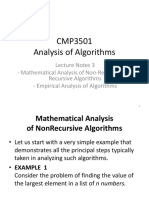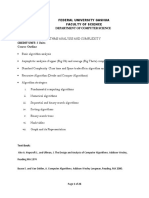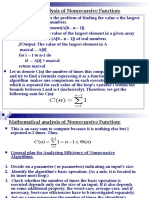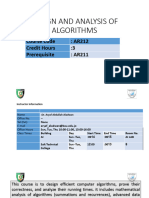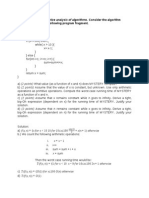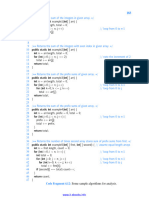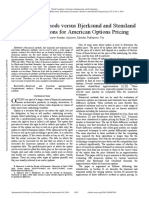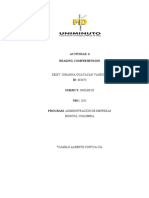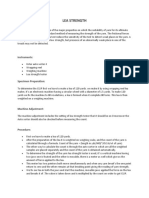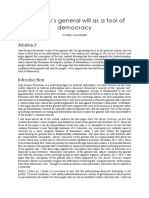0% found this document useful (0 votes)
144 views27 pagesCS483-04 Non-Recursive and Recursive Algorithm Analysis: Lifei@cs - Gmu.edu
This document provides an overview of analyzing non-recursive and recursive algorithms. It begins with reviewing asymptotic notation like Big-O, Omega, and Theta. It then discusses analyzing the time efficiency of non-recursive algorithms by identifying basic operations and simplifying sums. Examples of maximum element, element uniqueness, and matrix multiplication problems are provided. Analysis of recursive algorithms uses recurrences to describe functions in terms of smaller inputs. Examples of finding factorial recursively and non-recursively are given to illustrate recurrences.
Uploaded by
Asma PervaizCopyright
© © All Rights Reserved
We take content rights seriously. If you suspect this is your content, claim it here.
Available Formats
Download as PDF, TXT or read online on Scribd
0% found this document useful (0 votes)
144 views27 pagesCS483-04 Non-Recursive and Recursive Algorithm Analysis: Lifei@cs - Gmu.edu
This document provides an overview of analyzing non-recursive and recursive algorithms. It begins with reviewing asymptotic notation like Big-O, Omega, and Theta. It then discusses analyzing the time efficiency of non-recursive algorithms by identifying basic operations and simplifying sums. Examples of maximum element, element uniqueness, and matrix multiplication problems are provided. Analysis of recursive algorithms uses recurrences to describe functions in terms of smaller inputs. Examples of finding factorial recursively and non-recursively are given to illustrate recurrences.
Uploaded by
Asma PervaizCopyright
© © All Rights Reserved
We take content rights seriously. If you suspect this is your content, claim it here.
Available Formats
Download as PDF, TXT or read online on Scribd
/ 27



